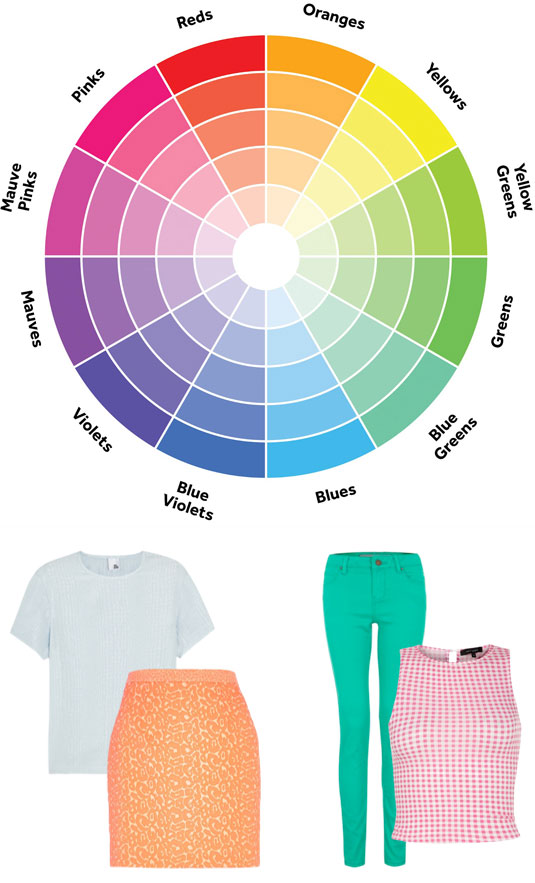1. Keep it in the family.
It's pretty straightforward: pastels with pastels, earth tones with earth tones, jewel tones with jewel tones, etc.2. Use a color wheel to find complimentary colors.
When you're talking about colors, "complimentary" actually means "opposite." Black and white, for instance, are complimentary colors. That's why they look so great together. You know, "opposites attract." That whole thing.
Every color has a complimentary color. It's just whatever is on the opposite side of the color wheel. True complimentary colors are the same distance from the center of the wheel, but it can be very striking to combine a color from the center, like a pale yellow green, with its complimentary color from the outside edge, like a deep mauve.

3. Give it the ombré test.
Different shades of the same color or similar colors almost always look good together (yes, this includes red and pink). If you need some help, do a Google image search for "ombré [insert color here]" and see what pops up.
4. Try the "J.Crew Hack."
J.Crew shoots all their clothes fully styled on a model, and they have a really great way with color. Take the piece of clothing you are looking to build into an outfit, then go on JCrew.com or open one of their catalogues and find something, anything, the same color. Then just make a note of the colors they are combining and copy it with clothes from your own wardrobe. I call it a "J.Crew Hack," but really it works with any brand or site that shoots their clothes on-model: Nasty Gal, Net-A-Porter, Zara. It's just a matter of finding a brand you like and copying the combos they use.



No comments:
Post a Comment